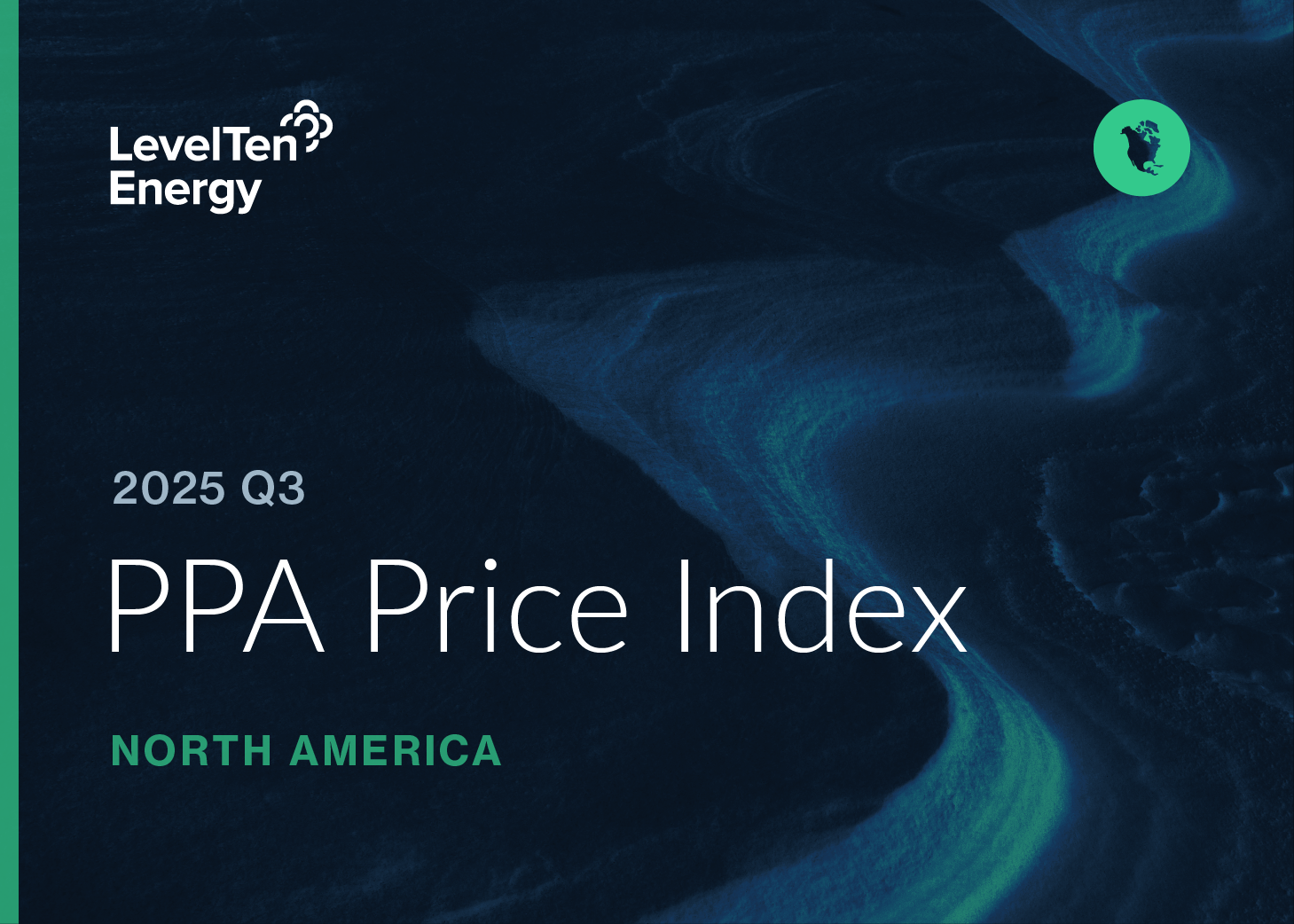LevelTen Energy’s newly released Power Purchase Agreement (PPA) Price Index reveals that although North American P25* offer prices increased 2.7% to $47.19 per MWh in the fourth quarter of 2022, wind prices fell for the first time in nearly two years.
Seattle, WA – January 31, 2023 – In the fourth quarter, North American P25* power purchase agreement (PPA) offer prices rose an average of 2.7% to $47.19 per megawatt hour (MWh), according to a new report from LevelTen Energy, operator of the world’s largest PPA marketplace. LevelTen’s P25 Index includes prices for both wind and solar long-term energy contracts, which are starting to exhibit diverging trends. For the first time in nearly two years, LevelTen’s P25 wind index fell 1.9% to $48.71 per MWh, while solar PPA prices climbed another 8.2% to $45.66 per MWh.
The Inflation Reduction Act may be stabilizing wind energy prices
“We hope that falling wind prices mean that they are beginning to stabilize, thanks to factors like the Inflation Reduction Act,” said Gia Clark, senior director of Developer Services at LevelTen Energy. “But solar PPA prices continue to increase because of stiff supply chain challenges. The Uyghur Forced Labor Prevention Act (UFLPA), while an important safeguard of human rights, has slowed module imports to a trickle, impacting project development schedules and prices, and PPA deals. Hopefully UFLPA compliance procedures will become more efficient so that we can see some relief for solar prices, too.”
North American PPA market highlights
LevelTen’s report, covering October to December 2022, shows PPA prices and trends in seven U.S. Independent System Operator (ISO) markets, including CAISO, ERCOT, ISO-NE, MISO, NYISO, PJM, and SPP, and one Canadian ISO: AESO. Report data is produced from PPA price offers uploaded to the LevelTen Energy Marketplace by wind and solar project developers.
- Wind PPA prices fell in SPP, MISO and AESO, but rose in ERCOT and PJM. “The passage of the Inflation Reduction Act in the U.S. and a 30% renewable investment tax credit in Canada last year provided welcome financial tailwinds for wind developers,” said Jason Tundermann, chief operating officer at LevelTen Energy. “This is the first drop in LevelTen’s North American Wind Index in nearly two years, and it’s hard to imagine that these tax credits weren’t a contributing factor. Tax credits aren’t a panacea though, with some markets still showing rising prices. Ongoing regulatory uncertainty in ERCOT and badly congested interconnection queues in PJM likely contributed to the price increases there.”
- PJM saw among the highest solar price increases. “It will take years to work through PJM’s current backlog of interconnection requests,” said Clark. “And the developers who have received their interconnection studies are telling us that estimated costs are much higher than anticipated, leading to higher PPA prices. Another side effect is that PJM’s overflowing demand is spilling into other ISOs, putting more pressure on markets like MISO.”
- Regulatory changes will keep the market dynamic. The UFLPA is delaying development and procurement for some developers and buyers, and creating a general environment of uncertainty for all, according to LevelTen’s survey of its network. Full implementation of the IRA, local interconnection queue reforms, and other regulatory issues will continue to play a role not just in PPA price calculations, but also in investor appetite for project development in certain areas of the country.
Demand for PPAs remains high
Despite the challenges in the market, clean energy buyers remain committed to their sustainability goals and trust PPAs as a solution. In 2022, energy buyers using LevelTen’s Energy Marketplace requested over 25 million MWh of clean energy, which is the equivalent of more than 2.3 million homes’ electricity usage for one year. “PPA prices remain elevated but so is the cost of energy,” said Clark. “PPA buyers are savvy and know that the financial value of a PPA contract lies in the difference between the wholesale energy price and PPA price. We don’t expect demand to decrease this year despite the market uncertainty.”
Download the free executive summary or full report
Learn more by visiting www.leveltenenergy.com/ppa to download the free executive summary or purchase the full report. LevelTen’s report helps renewable energy developers, buyers and financiers navigate the PPA market with data from real PPA price offers and expert insights. LevelTen also offers custom market reports and procurement optimization reports. Contact datasolutions@leveltenenergy.com to learn more.
*LevelTen’s P25 Price Index represents an average of the 25th percentile PPA price from each market. All PPA price data in LevelTen’s report are based on the prices that developers are offering for PPA contracts, not transacted PPA prices.


.png)



